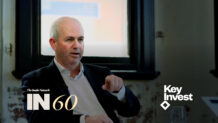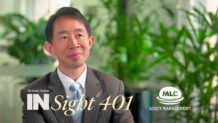Alignment of interests and the value of human capital
One of the boxes ticked when selecting a fund manager is whether the investment team has its own money in the strategy, or even better, has ownership in the organisation. The logic is self-evident: ‘skin in the game’ should matter.
Yet there are, inevitably, drawbacks. The fund’s risk /return appetite may be unduly influenced by the personal attitude of the manager. A change in the managers’ own circumstances could result in a subconscious influence on the approach to the portfolio. FUM growth becomes a huge incentive, and key team members may find they are spending much of their time marketing rather than managing the portfolio.
The other obvious issue is whether it makes portfolio sense to have such an investment. A youngish team member should arguably not have any money in a retirement-oriented product. Nor is an outsized allocation to any fund necessarily a great idea. It can be of interest to ask managers where they allocate outside their own fund. Naturally, they may be reluctant to answer in detail but there seems to be no reason why it should be an overly invasive question. It may expose biases and attitudes to investment processes that are not evident from talking about their fund.
As is the case in many organisations, not least advisery firms, the questions of founder ownership, employee shareholdings and transitions are complex. Yet managers are very keen to talk up their combined decision-making, and to stress ‘team’ rather than individual rewards. The same ethos can be notably absent in the structure of the group where ownership is concentrated in the hands of a few.
A parallel discussion is emerging in company employee plans. Many countries are changing the tax implications of stock-based compensation and companies have an increasing vested interest to retain skilled employees given persistent problems in attracting new staff. Further, it is a way of selectively increasing wages via a transfer from shareholder capital.
Studies on the merits of employee shareholders are mixed. Smaller organisations generally view it as positive, but there is no obvious way to compare the outcome of one with high employee ownership to those without, given the interplay with so many other factors. Large companies are hamstrung by the distance between the impact of individual employee effort and the value of the company.
Even more problematic is where the share price of a company is hit by issues well outside the most useful employee’s control. Nor does it help when already well-paid executives get free-riding options or are able to reset the exercise price.
Shareholdings and ownership rewards for employees strikes one as such a potentially important feature for both fund managers and companies that its worth getting right. The best direction is to be clear on why and how shareholdings are earned. Smaller companies with high, but not dominant founder shareholdings, and a broad participation across the organisation, generally do well.
The gold standard requires rewards to align with the time frame in which the decisions are based. Here the majority of fund managers get a fail. Performance fees are clearly out of line with the constant repetition of three-to-five-year investment horizons. What about units in the fund that are escrowed for three-to-five years?
When so much attention is being paid to ‘human capital’, the low level of debate on how that capital is paid for is notably absent in investment circles.











